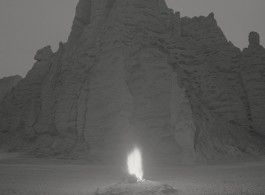ODE Statement
The Book of Odes, China’s earliest collection of poems, marks the beginning of Chinese civilization and delineates certain core elements of Asian culture.
My search for the broad mountains, flowing rivers, ruined walls and ancient paths of the Book of Odes felt much like a mysterious engagement with an absent partner. During the shoot, it was almost as if my emotions and artistic direction were under the influence of some unknown force.
When I think back to before I started this project, after several months of textual and geographical research, I was alarmed to find myself falling into the vast artificial construct of annotations and commentaries built by generations of Confucian scholars. With the shadow of such cluttered and factitious interpretations still hanging over the Odes, the meaning of the original text has been misconstrued and concealed, and a distorted, so-called truth has been created.
I believe that changing reality and the text, including historical annotations, continually influence each other. I ask, therefore, in this never-ending process of mutual transformation, what are the principal divergences from the original text, and what layers of meaning have been lost? In terms of my own personal experience, as the original text has long been separated from its concrete context, what is the necessity and basis for so-called poetic sentiments?
I hope to build a stable artistic structure that corresponds on some level to the composition of the Book of Odes, but at the same time push the Ode’s literary significance into a distant and unfamiliar world, bringing the work’s amorphous and mystical concepts into reality, and by doing so, facilitating analysis of the Odes, which truly is an artistic model with limitless possibility.



